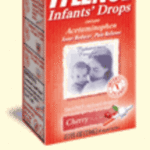Like so many people, I live with chronic pain. Mine results from fibromyalgia and a variety of back problems. Traditional pain medications like ibuprofen (Motrin and Advil), naproxen (Aleve), acetaminophen (Tylenol) and prescription NSAIDS (non-steroidal anti-inflammatories) either don’t work for fibromyalgia (a disease whose many symptoms include random pain) or play havoc with my digestive system.
So, like so many people, I’ve turned to the world of topical pain relievers for help. I’ve tried pretty much every type – creams, patches, heat wraps – so here are some that have worked for me (in no particular order) and some that haven’t. Your results may vary. And please, follow all package directions.
Creams And Other Assorted Goop
1. Biofreeze
This menthol-based gel (also available in a spray version and a roll-on) is only available from your physical therapist, chiropractor or massage therapist. It’s light, non-greasy and won’t stain your clothes. The scent disappears after a while. Unfortunately, so do the effects. My physical therapist likes it because it allows him to work more easily with post-operative patients. But I’ve found it’s good if you need to get through a difficult situation, say you’re out somewhere and start to hurt and need something to get through the drive home or through the rest of the afternoon at work. Or if you wake up with minor pain at night and want something to knock it down so you can get back to sleep. Before you commit to the cost (about $9 for a tube, $11 for the spray) you can probably get a sample or two from your bodycare professional. I keep these in my purse for emergencies. Just don’t use Biofreeze with other external heating devices. And this includes a car with black upholstery left sitting in the sun, which I found out by accident. Ouch.
2. Aspercreme
This cream has been around for years, and for good reason: it works, it’s inexpensive compared with other remedies, and it doesn’t smell. On bad days when I get aches in my fingers, I use it like hand cream, although it’s a bit greasy. Don’t use it if you’re allergic to aspirin or other salicylates.
3. 024
This very expensive, Swiss oil-based concoction has been touted as giving “eight hour relief” from fibromyalgia and other pain. I used it for a while and never got more than four or five good hours out of it. But four or five good hours are still four or five good hours, and that’s not bad when you’re having a lousy day. I’m not convinced, however, that it’s worth the $20 per vial cost. Another minus is that it’s camphor-based (think mothballs), and after a while the smell gets into your clothes, your bedding, wherever you put it. If you’re someone who has multiple-chemical sensitivities, this could be a problem. Fortunately it’s also available as a package of towelettes (for about $9), which could be a more cost-effective solution. I keep a pack around for occasional use.
4. Capsaicin Extract Creams
There are numerous capsaicin-based creams on the market (capsaicin is extracted from hot peppers) and they work because the burning from the capsaicin travels faster along your nerve fibers than the pain. This is the theory behind just about all externally applied pain relievers, including ice and heat. I’ve tried a few of these creams, and while my skin is too sensitive to handle most of them (one left my skin with what the manufacturer called “transient burning” for days, even after I’d washed the area several times), maybe they’ll work better for you. I do use one called Sombra, which again is only available from bodycare professionals, and it’s got a lower percentage of capsaicin than commercial formulas. If you use these hot-pepper creams, follow the instructions. When they say not to use them with other creams or with a heat pack, trust me, they mean it. And that includes that car left sitting in the sun.
5. Topricin
I’ve fallen in love with this unscented, arnica-based homeopathic cream. It’s manufactured by a small laboratory in Rhinebeck, NY. While topricin is expensive ($25 for a 4 ounce tub), it’s amazing. It not only gives symptomatic relief, but is the only cream I’ve seen that is actually anti-inflammatory. Great for sciatica, sudden injuries and to use before and after exercise or physical therapy. If you don’t live in the Hudson Valley area you can get it on the web at Vermont Country Stores.
And for the heck of it, because I know you’ve been wondering…
6. Head On
You’ve seen the annoying commercials. You’ve seen the commercials making fun of how annoying the commercials are. “Head On…apply directly to the forehead…Head On…apply directly to the forehead…” But I actually tried this stuff (about $4 a tube). I don’t know about the effectiveness of the homeopathic ingredients, but it seems to work basically by freezing your forehead so you are distracted from the pain. And in reply to the commercials, I’ll say, “Head on…use it and you’ll need to reapply every fifteen minutes…Head on…use it and you’ll need to reapply every fifteen minutes…”
Patches
In general I’ve found patches, while slightly more expensive, offer better and longer-lasting pain relief than creams. The patch delivers consistent and longer-lasting pain-reducing substances that won’t come off on your clothes. With some caveats, of course.
1. Tiger Balm
The little glass vials of Tiger Balm paste have been around forever. This is a slightly modified formula in a patch form, using mainly capsaicin and camphor as active ingredients. My hair stylist swears by them, and this is a woman who knows pain. Unfortunately the ones currently available on health food store and pharmacy shelves (about $5.00 for a package of five) are only about as big as a playing card, hardly big enough to handle most types of pain. But if you’ve got a spot or two that’s driving you bats, these are great, and they work for a long time. Just wait an hour after removing one to take your hot shower or bath, and don’t stick another one on until a half-hour after you are done. The hot car rule seriously applies here.
2. Ben Gay Patches
When I first saw these in the store, I thought, “Oh, that smelly greasy stuff we used in high school.” But the patches, while still giving off that familiar wintergreen aroma, are much less intense. And your clothes don’t get greasy. I like the larger patches; I stick one across my lower back before I go to bed and at least this part of me is a lot less stiff when I wake up. And they come off easily. About $6 for a package of 8 patches, available at most pharmacies.
3. Icy Hot Patches
These menthol-based patches work the same way as Ben Gay patches and are slightly less expensive. But when I used one (the large, back-sized), I found that it didn’t work as long as the Ben Gay patch, and it was hard to remove.
4. Lidoderm
These patches, impregnated with the anesthetic lidocaine, are only available by prescription. Designed for relieving the intense skin pain some people can get following a bout of singles, these also work well on other types of chronic nerve pain. What I like is that you can wear them for twelve hours (and they actually work for that long), and they don’t smell, feel cold or burn. But they aren’t like other prescription patches, such as hormones or nicotine: don’t them while bathing or you’ll end up with a goopy mess.
Heat Wraps and Heat Patches
These relatively expensive devices work by…well, I’m not sure exactly how they work. They contain iron bits, and they are activated by exposure to air…and…well, they work. But again, some work better than others. I also have concerns about disposal and if they are environmentally friendly.
1. ThermaCare wraps
The back wraps (or any of the varieties that attach with Velcro) are far and away the best. They’re expensive (about three bucks each for the back ones, and they come in packs of two) but worth it. I save them for times of dire need…like when I’m flared up or sore from physical therapy or an overenthusiastic workout and need to travel or go to an all day event. In general I’ve found that the wraps that attach with Velcro work better (because the heating elements are kept in closer contact with the skin) than the adhesive patch type.
2. Ace Brand wraps
These work the same way as the ThermoCare patches and wraps…and are a little less expensive. I’ve only tried the smaller, adhesive kind (I wore one when I wrote the first draft of this article) and like the Thermacare adhesives, it only offers me a slight sense of warmth. The adhesive came off easily for me, but removal might be a bit uncomfortable for hairy guys.
Hopefully one or more of these will work for you. And again, whichever one you choose, please follow all package directions or you could wind up with some nasty burns.
Trust me.
Reference:
- To order Topricin: www.vermontcountrystores.com




